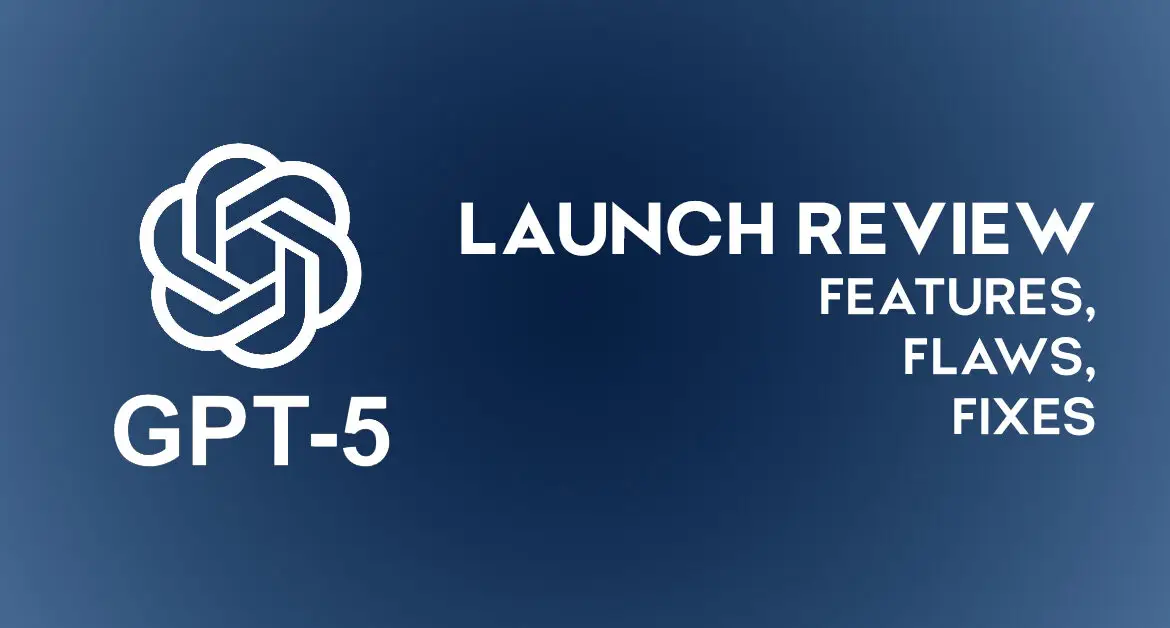On August 7, 2025 OpenAI launched ChatGPT 5 with an ambitious promise: one unified system that knows when to answer fast and when to think deeply. It arrived with big claims about better coding, fewer hallucinations, improved health guidance, and less sycophancy. It also landed in the middle of the workday for millions of teams already using ChatGPT, which is exactly why the first week mattered so much.
What actually shipped
OpenAI’s own release notes describe GPT‑5 as a routed system: a fast default model for most prompts, a deeper “GPT‑5 Thinking” mode for harder problems, and an automatic router that decides which to use. The company says it cut hallucinations substantially, boosted instruction following and agentic tool use, and posted strong benchmark gains in coding, math, multimodal reasoning, and health. The rollout also coincided with “nearly 700 million” weekly ChatGPT users, which hints at the scale involved.
The good
Teams building software noticed real upgrades. GPT‑5 is positioned as OpenAI’s strongest coding model to date, with better front‑end generation, debugging across larger repos, and more consistent design sensibility when turning an idea into a working site or app. OpenAI also reports large reductions in hallucinations and more honest failure modes, which matters for regulated or high‑stakes workflows.
The bad
The first 72 hours were bumpy. Users reported simple errors and a sudden loss of direct access to older models they relied on, which amplified frustration. The automatic router that chooses when to “think” malfunctioned during part of day one, which made GPT‑5 seem less capable than expected. As criticism spread on Reddit and X, message limits for the new Thinking mode and the disappearance of model choices became flashpoints for power users.
If you felt rate‑limited, you were not imagining it. OpenAI’s help documentation lists a cap for GPT‑5 Thinking of up to 200 messages per week for Plus or Team users, along with general caps on standard GPT‑5 usage. Those constraints, combined with the initial loss of legacy models, created a sense that the upgrade made everyday work harder.
What OpenAI changed in the days after launch
1) Brought back GPT‑4o for paid users. After a wave of complaints, CEO Sam Altman said GPT‑4o would return as an option for Plus subscribers. Digital Trends and MacRumors both reported the reversal, noting that 4o reappeared in the model list for paid accounts. This addressed users who preferred 4o’s tone and behavior for writing, brainstorming, and creative tasks.
2) Fixed the model router and promised clearer model labeling. Altman acknowledged that the auto-switcher broke during launch day, then said OpenAI had implemented fixes and would make the interface clearer about which model is in use. Axios summarized the plan and quoted Altman’s explanation of why replies “seemed way dumber” when routing failed.
3) Eased some limits and increased access to deeper reasoning. Altman also said OpenAI would increase access to the higher‑effort reasoning mode, and coverage in the days after launch described rising limits as the rollout stabilized. OpenAI’s help page reflects higher short‑term caps on standard GPT‑5 usage, and industry press reported that Plus users would see expanded availability of the Thinking mode as fixes rolled out.
How to adapt your workflow right now
Treat “Thinking” like a finite resource. Reserve GPT‑5 Thinking for tasks that benefit from chain‑of‑thought style reasoning, like multi‑step analysis or complex coding. Use standard GPT‑5 for quick drafts and retrieval.
Keep a fallback model in your playbook. If your team prefers the tone or behavior of GPT‑4o for specific tasks, make it explicit where 4o is the default and where GPT‑5 should take over. This is especially helpful for writing and creative work.
Ask for model transparency in your tools. Many vendors sit on top of ChatGPT. Confirm they expose which model handled a response and when deeper reasoning was used. OpenAI has said it will make this clearer in the ChatGPT interface itself.
Re‑evaluate prompt libraries. Some prompts tuned to 4o produce flatter prose on GPT‑5. Refresh tone directives, audience notes, and style constraints, then A/B test against your real deliverables.
Update usage guardrails. If you manage costs or throughput, align your team on when to spend a Thinking message, how to escalate to Pro, and when to switch models for speed.
The bigger picture
A rocky first week does not erase the architectural shift OpenAI is making. GPT‑5 blends fast inference with on‑demand deeper reasoning, it narrows hallucinations, and it pushes more honest “cannot do” responses when tools or context are missing. For leaders, the practical move is not to pick a winner between 4o and 5 forever. The practical move is to route the right work to the right model, monitor how the caps evolve, and lock in measurable gains in cycle time or quality where GPT‑5 already excels.


